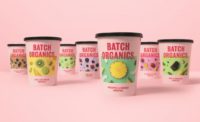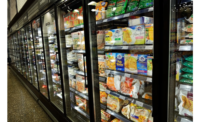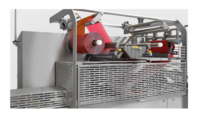Demand for fresh ingredients thawing frozen foods growth

Frozen foods of all kinds have been challenged in recent years as a result of the convergence of several trends. Chief among these trends is the growing demand for fresh products or, at least, fresher products in refrigerated rather than frozen form, according to market research Packaged Facts (packagedfacts.com) in the report, Frozen Foods in the U.S.: Hot Meals, Sides, and Snacks.
"Many consumers have come to believe that only fresh foods offer real nutritional value. These consumers perceive frozen dinners as a remnant of a past dining era in which these products were valued more for their convenience than their healthiness. Unfortunately, the fact that frozen foods can potentially offer the same nutritional value as fresh or refrigerated foods is simply lost on consumers holding this anti-frozen foods view point," says David Sprinkle, research director, Packaged Facts.
Undoubtedly, consumer concerns are not completely baseless. Frozen foods often, but not always include preservatives such as potassium sorbate, calcium propionate, and sodium tripolyphosphate among their ingredients. As increasing numbers of consumers come to focus their attention on labels, seeking products that are "natural," these ingredients, while providing a boost to freshness, turn out to be a detriment in terms of sales. In addition, some of the diet-oriented frozen products that have been highly successful in previous years because of their low calorie counts are now coming under scrutiny for their high salt contents, another ingredient causing concern to the growing numbers of health conscious, label reading consumers.
The challenge of freshness is hitting frozen foods from all sides. There are more and more sources, such as farmers markets and expanded produce sections in traditional supermarkets and in supercenters like Wal-Mart, who in recent years proclaimed intentions to put a new focus on providing fresh foods. Even convenience stores, not traditionally known for carrying fresh products, are expanding their fresh offerings.
Nevertheless, there is a silver lining for the frozen foods industry. Frozen products identified as natural and/or organic appear to be having a more positive experience than frozen foods in general. Consumer concerns about preservatives and other ingredients are alleviated by the notion that if the products are natural or organic, they must be fresher or, at least, healthier.
In addition, Packaged Facts estimates that sales of the collective frozen food categories dinners/entrées, pizzas, side dishes, and appetizers/snacks will increase from $22 billion in 2014 to $23 billion in 2019. Frozen side dishes and appetizers/snacks are the two categories projected to garner the most growth.
Looking for a reprint of this article?
From high-res PDFs to custom plaques, order your copy today!








